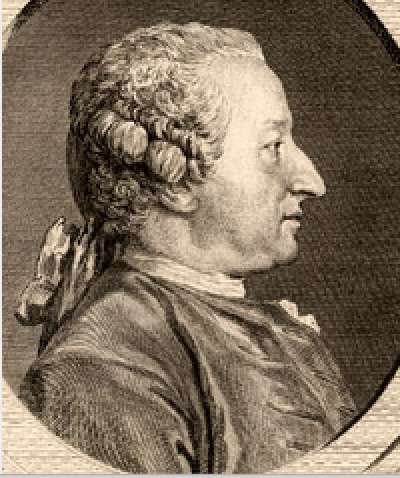- About MAA
- Membership
- MAA Publications
- Periodicals
- Blogs
- MAA Book Series
- MAA Press (an imprint of the AMS)
- MAA Notes
- MAA Reviews
- Mathematical Communication
- Information for Libraries
- Author Resources
- Advertise with MAA
- Meetings
- Competitions
- Programs
- Communities
- MAA Sections
- SIGMAA
- MAA Connect
- Students
- MAA Awards
- Awards Booklets
- Writing Awards
- Teaching Awards
- Service Awards
- Research Awards
- Lecture Awards
- Putnam Competition Individual and Team Winners
- D. E. Shaw Group AMC 8 Awards & Certificates
- Maryam Mirzakhani AMC 10 A Awards & Certificates
- Two Sigma AMC 10 B Awards & Certificates
- Jane Street AMC 12 A Awards & Certificates
- Akamai AMC 12 B Awards & Certificates
- High School Teachers
- News
You are here
The Four Curves of Alexis Clairaut: Introduction

Figure 1: Alexis Clairaut (1713–1765).
Convergence Portrait Gallery.
Alexis Clairaut was born 7 May 1713 in Paris, to father Jean-Baptiste and mother Catherine (née Petit). His father was a mathematician and teacher. Alexis began to learn at home from a young age and proved a veritable prodigy. He is said to have learned the alphabet from the diagrams in Euclid’s Elements (though, to be fair, this may have been intended tongue-in-cheek, as in, He was studying mathematics so early that he was reading Euclid at the same time he was learning the alphabet!). Certainly, at age four he could read and write well. By nine, he had studied Nicolas Guisnée’s 1705 Application de l’algèbre à la géométrie [9] under the guidance of his father. At ten, he began studying Traité analytique des sections coniques (1720) and Analyse des infiniment petits (1696), both by L’Hôpital. For further details about Clairaut’s life and work, see [4; 8; 10].
On 18 May 1726, just a few days after his thirteenth birthday, Clairaut presented his research on four families of algebraic curves to the Royal Academy of Sciences in Paris. This work was later published, in 1734, in volume 4 of the Miscellanea Berolinensia under the title “Quatre Problèmes sur de Nouvelles Courbes” [2]. It was preceded by a paper written by his father, which concerned inscribing solid figures inside other solid figures. The younger Clairaut is referred to in the publication as Mr. Alexis Clairaut, le Fils, although the contents of his paper clearly are more sophisticated than those in his father’s article. The end of the younger Clairaut’s article bears a note, signed by Bernard de Fontanelle, indicating that he was examined by François Nicole and Henri Pitot on this date (18 May) and recognizing that he was twelve and a half when developing this material.
Clairaut’s curves were partly motivated by the classical Greek problem of finding any number of mean proportionals between two given segments. The case of one mean proportional is given in Euclid's Elements (VI.13). Finding two mean proportionals is sufficient to solve the problem of duplicating a cube; a wealth of solutions were known in antiquity and were recorded by Eutocius of Ascalon. One solution, due to Eratosthenes, permits solving the more general problem of finding any number of mean proportionals. Some early modern mathematicians revisited these ancient solutions; in particular, the next section considers work by Descartes that explores one of the same families of curves that would later be taken up by Clairaut.
Taner Kiral (Wabash College), Jonathan Murdock (Wabash College), and Colin B. P. McKinney (Wabash College), "The Four Curves of Alexis Clairaut: Introduction," Convergence (November 2020)




